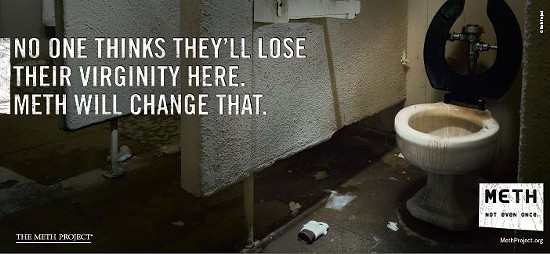There is probably no drug more vilified these days than meth, and Missouri is often said to be the capital of meth production. That's not something to be proud of considering many people think the average meth user smokes bathtub cleaner chemicals before arrested for biting -- with their last two good teeth -- the face of a convenience store worker in a botched attempt to steal a carton of Marlboro Reds.
But a new report from Dr. Carl Hart, a neuropharmacologist at Columbia University, says there are a lot of misconceptions about meth. In fact, it might not be as bad as we think it is.
In the study, titled "Methamphetamine: Facts vs. Fiction," Hart compares the current meth scare to the crack scare of the 1980s. Misinformation during the Reagan era led many to hold the common belief that a hit of crack would cause first-time users to get addicted and the drug caused many dangerous and deadly side-effects.
This, partially caused by media reports that sensationalized the facts about crack use, led to 1986 Anti-Drug Abuse Act that set mandatory minimum sentences of extreme and disproportionate lengths, compared to other drugs, in particular cocaine, which crack is almost identical to chemically. Crack was more common in black neighborhoods than white neighborhoods during the 1980s, so the law disproportionately affected black people.
See also: The Justice System is On Crack
The law stated that a person convicted of selling 5 grams of crack cocaine was required to serve a minimum sentence of five years in prison convictions involving 50 grams of crack carried a minimum sentence of 10 years. To receive similar sentences for trafficking in powder cocaine, individuals needed to have been caught selling (or intending to sell) 500 grams and kilograms of cocaine, respectively.
Eager to profit off the drug scare for political purposes, many state politicians created their own anti-drug laws, including here in Missouri, where the Prior and Persistent Drug Offender statute was created in 1987. That law gave a mandatory sentence of 10 years to life for anybody convicted of a third drug felony. As a result, many people convicted with very small yet felonious amounts of drugs served extreme sentences. For example, a few grams of crack could and still does get people 10 to 20 years in Missouri.
See also: 20 Years for $40 of Crack, 10 Years for 2 Oz. of Pot? It Happens in St. Louis, Not Just Out West
Hart says the same fear-mongering that led to illogical and unjust legal policy in the 1980s is happening again, this time with meth.
Click on the next page for more meth...
One of the most common misconceptions according to Hart, is that meth causes physical deformities. The meth-mouth addict with two or three pieces of yellowed, decayed teeth is not that way because of meth. In fact, there is "no empirical evidence to support the claim" that meth makes us any uglier than those who take ADD pills.
"Adderall and generic versions are used daily and frequently prescribed each year they are among the top 100 most prescribed drugs in the United States yet there are no published reports of unattractiveness or dental problems associated with their use," Hart says.
Rather, the people we see in those infamous mug shots can blame their lack of photogenic abilities on "poor sleep habits, poor dental hygiene, poor nutrition and dietary practices, and media sensationalism."
Another misconception is the addictive power of meth. But it's not much more addictive than alcohol, with less than 15 percent of meth users become addicts, says the report.
Many anti-meth advertisements convey the perception that one use will result in severe addiction, but these ads have the opposite effect on the communities most likely to use meth, which is white people in rural areas.

"These individuals most likely know people who have used the drug, and the information presented in the advertisements is inconsistent with their own knowledge," Hart says. "Here, the parallel is to early propaganda about marijuana and the film "Reefer Madness." The film is now a 'cult classic' because it is widely regarded as a comedy as well as a cautionary tale of official propaganda."
This is not to say that using a lot of meth won't damage your brain. Hart's study doesn't go into the long-term physical effects on the brain, but he recommends two in-depth studies that did just that. In one of those studies, it says "chronic meth users suffer physiological harms, psychosis and cognitive impairments." And in animals chronic use has caused neuro-degenerative effects. See also: Missouri Leads the Nation in Meth Labs (Again)
However, Hart's study does go into the "cognitive effects" of long-term meth use. And there are conflicting studies in regards to how much of an effect meth could have. A flaw in a major recent study compared cognitive effects of users to non-users, but the non-users had a higher education level, which could have had an effect on their better performances.
Other studies have had similar problems, and Hart concludes that: "We are nowhere near being able to distinguish the brain of a drug addict from that of non-drug addict."
Despite Hart's argument that meth is not as bad as we think it is, the law says different.
Meth is a top priority for law enforcement in the Show-Me state and Missouri's Drug Task Force busts a lot of meth labs, including 1,700 in 2012, resulting in many more arrests and property seizures.
Follow Ray Downs on Twitter:
E-mail him at [email protected].






